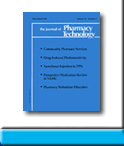 |
 |
DRUG-RELATED
ASTHMA
Liubov (Louba) Ben-Noun
To request full article click here.
OBJECTIVE: To review the literature on drug-related asthma.
DATA SOURCES: All relevant articles from January 1966 to November 1997 were identified by a MEDLINE search. Terms used in the search, alone or combined, included adverse effects, cough, dyspnea, bronchoconstriction, asthma, angiotensin-converting enzyme (ACE) inhibitors, beta-agonists, beta-blockers, calcium-channel blockers, nonsteroidal antiinflammatory drugs (NSAIDs), cholinergic agents, cromolyn sodium, and contrast media. Some studies were identified from bibliographies of selected articles and book chapters.
STUDY SELECTION: More than 460 articles were identified. Reports were included if they contained new or relevant information on drug-related asthma. Of the more than 134 reports on ACE inhibitors, 12 double-blind, clinical, observational, cohort, case-control studies, and review articles related to ACE inhibitor-induced cough and 10 reports on treatment of cough were included. Abstracts were included only when they added information not otherwise available in the literature.
DATA SYNTHESIS: Cough is associated with ACE inhibitor therapy more often than other respiratory symptoms. Both nonselective and selective beta-adrenergic antagonists can provoke asthma. Regular treatment with inhaled, short-acting beta-adrenergic agonists can lead to deterioration of the lung function, most likely associated with paradoxical bronchospasm. The indications for their use are relief of symptoms of acute asthma and prevention of exercise-induced bronchospasm. Long-acting beta2-agonists (e.g., salmeterol) can be beneficial when used as adjunctive therapy with inhaled corticosteroids, especially to control nighttime symptoms. An asthmatic reaction induced by calcium-channel blockers, intravenous hydrocortisone succinate, and cromolyn sodium is rare. NSAIDs, including aspirin, can provoke asthma. Bronchospastic reaction may be associated with contrast medium therapy (nonionic more than ionic). In patients with a previous anaphylactoid reaction who require readministration of contrast media, pretreatment with prednisone and diphenhydramine (with or without cimetidine and with or without ephedrine) is recommended. An asthmatic reaction associated with other drugs is rare.
CONCLUSIONS: Although various medications have been associated with the development of asthma, drug-induced asthma is mainly associated with beta-adrenergic blockers, NSAIDs, and intravenous contrast media. Asthmatic reactions related to other drugs are much less prevalent. Healthcare professionals should keep in mind the possible adverse asthmatic effects of these drugs before prescribing them for patients.
J Pharm Technol 1998;14:116-24.
To request full article click here.
|
|
|
||
|

